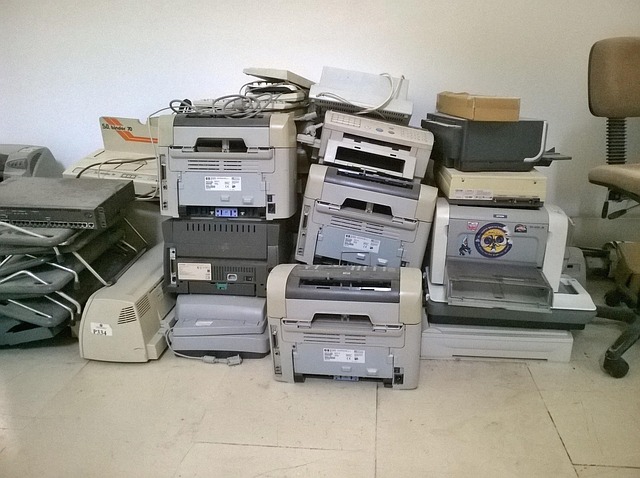Think about all the tech devices we use daily—laptops, printers, smartphones, routers. Now imagine what happens to them once they stop working or become outdated. Most of us either store them away in drawers or toss them out with regular trash. But there’s a smarter, safer, and more sustainable way to deal with outdated tech: IT equipment recycling.
It’s not just about environmental responsibility—it can also be an opportunity. For example, many businesses and individuals sell used network equipment before it becomes completely obsolete. This extends the life of the hardware and helps recover some value. When selling isn’t possible, recycling is the next best move. This practice has grown in importance as the world becomes more digital and our reliance on technology increases.
What Exactly Is IT Equipment Recycling?
IT equipment recycling refers to the process of collecting, dismantling, and repurposing old electronics. It’s not just about tossing a broken laptop into a different bin. It’s a detailed system that ensures devices are handled responsibly.
When you recycle IT equipment, trained technicians sort and break down devices to recover useful components. Plastics, metals, and even tiny amounts of gold can be reused in manufacturing new devices. Some electronics are still functional and get refurbished for reuse. The goal is to reduce waste, recover materials, and minimize harm to the environment. Simply put, it’s about giving technology a second life—or disposing of it safely when that’s not possible.
Why Should Anyone Care?
To the average person, a dusty old keyboard may seem harmless. But inside many electronics are toxic materials like lead, mercury, and cadmium. These substances, when dumped into landfills, can leak into soil and water. Over time, that damage becomes nearly impossible to reverse. Recycling helps solve that problem. It keeps harmful chemicals out of the environment. It also reduces the need to mine new raw materials. Mining is resource-heavy and can cause long-term damage to ecosystems.
There’s also a practical side. Electronics are packed with valuable materials. A single computer contains metals that can be reused instead of extracted from the earth again. By recycling, manufacturers can reduce production costs while conserving limited resources.
Another often overlooked benefit is data security. Old devices usually store sensitive information, whether it’s personal photos, emails, or financial records. Tossing them in the trash poses serious risks. Professional recycling services often include data wiping or drive destruction, which protects you or your business from data theft.
A Circular Approach
The modern economy thrives on consumption. New devices constantly replace old ones, even if the old ones still work. IT recycling pushes against that throwaway culture. It promotes a circular mindset—one where products are reused, repaired, or responsibly dismantled rather than discarded.
In a circular economy, waste becomes a resource. Materials are reused as many times as possible. This reduces pressure on natural systems and encourages smarter consumption. For businesses, this shift isn’t just good for the planet—it’s good for the bottom line. IT recycling helps companies reduce storage needs, lower disposal costs, and meet sustainability goals. Some even qualify for environmental certifications that enhance their reputation with eco-conscious customers.
What Happens During the Recycling Process?
The journey of recycled electronics begins when a person or company decides to part with it. Some recyclers offer pickup services, especially for larger volumes. Others work through drop-off locations or partnerships with electronics retailers.
Once the equipment reaches the recycling facility, the first step is assessment. Staff check which devices still work. If something can be refurbished, it’s cleaned, tested, and updated for resale or donation. Broken or obsolete items are taken apart. Technicians remove batteries and separate materials—circuit boards, plastics, and metals. Each part goes through a different processing stream. Some items are melted down. Others are shredded. All of this happens in compliance with environmental regulations.
Before any device is processed, recyclers ensure data is removed. This step is critical, especially for businesses that store sensitive client or employee information. Certified recyclers use approved software to wipe drives or physically destroy storage components.
Is Everything Recyclable?
Not quite. While most electronic components can be recycled, some parts are more difficult to process. Devices that mix multiple materials—like touchscreens with embedded sensors—pose a challenge. Also, older electronics that use banned substances (like certain flame retardants) may need special handling.
Still, the majority of IT equipment can be recycled or reused. And as recycling technology advances, even complex devices are becoming easier to process. The key is to work with trusted recyclers who follow strict environmental and safety standards.
Where Can You Recycle Old IT Equipment?
Most cities now offer some type of e-waste collection. You might find local drop-off days or designated recycling centers that accept electronics. Many retailers also take back used devices, sometimes in exchange for discounts on new purchases.
Some big-name manufacturers have buyback or mail-in programs. Companies like Apple, Dell, and HP offer ways to return old products for recycling or store credit. These programs make it easy to recycle without hunting for a third-party provider.
When possible, choose a certified recycling service. Look for labels like R2 (Responsible Recycling) or e-Stewards. These certifications ensure recyclers meet high standards for worker safety, environmental care, and data protection.
What Happens If We Don’t Recycle?
The consequences of ignoring IT recycling are already visible. E-waste is one of the fastest-growing waste streams globally. According to the United Nations, over 50 million metric tons of e-waste are produced each year, and less than 20% gets properly recycled.
When electronics end up in landfills or incinerators, they release harmful substances into the air, water, and soil. This pollution can affect nearby communities, contaminate food sources, and contribute to climate change.
The loss is economic, too. Billions of dollars worth of recoverable materials go to waste. These could otherwise fuel manufacturing, reduce costs, and create jobs in the recycling sector. For businesses, improper disposal can lead to fines or legal issues—especially if sensitive data leaks or hazardous waste laws are violated.
Making Recycling a Habit
Recycling IT equipment doesn’t need to be complicated. With a bit of planning, it can become a normal part of device lifecycle management. Start by setting aside broken or unused electronics in a dedicated storage area. Then, schedule regular pickups or drop-offs with a certified recycler.
If you’re upgrading systems at work, think about recycling as part of your transition plan. Some recyclers even offer asset tracking, which makes it easier to monitor what gets recycled and when. For individuals, check if your local government or electronics retailer runs recycling events. Spring cleaning is a great time to offload old gear responsibly.
Final Thoughts
Recycling IT equipment is a necessary step in a world that’s flooded with electronics. It helps protect the planet, secure personal data, conserve valuable materials, and reduce landfill waste. Make recycling part of the plan. It’s simple, smart, and makes a real difference.




